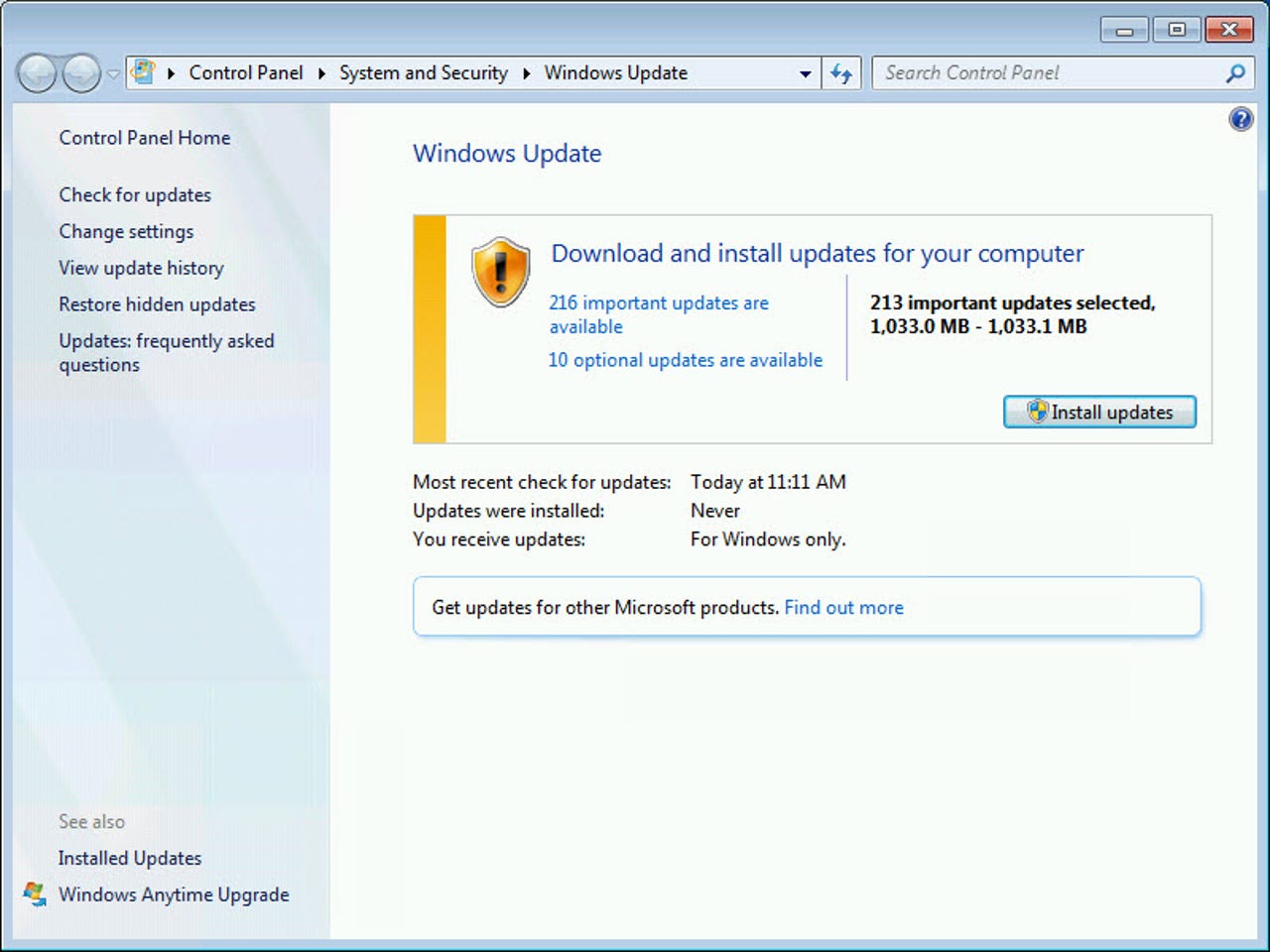Sticking with Windows 7? The forecast calls for pain

On Monday morning, I began installing Windows 7 Pro on a clean virtual machine.
On Tuesday morning, more than 24 hours later, the installation was still not finished.
That, in a nutshell, is the unpleasant reality that consumers and small businesses face in sticking with Windows 7 as it counts down to the end of support, 1398 days from today.
The biggest problem, of course, is that Microsoft released Windows 7 Service Pack 1 on February 22, 2011, more than five years ago. Despite occasional rumors and hopes, Microsoft has never released a Service Pack 2 or even a post-SP1 update rollup. Which means that if you try to do a clean install using the most recent installation media, as I did on Monday, this is what you see when you run Windows Update.

Yes, 216 Important updates are available even with Service Pack 1 installed, and you'd have to be crazy to connect to the Internet without installing those patches first.
But that's not the worst of it.
Just getting to that screen took more than eight hours, thanks to a bug that was documented last fall in Microsoft Knowledge Base article 3102810: Installing and searching for updates is slow and high CPU usage occurs in Windows 7 and Windows Server 2008 R2.
"Slow" does not even begin to describe the glacial pace at which Windows 7 works before even displaying the list of available updates.
There is a workaround, as I discovered. Download two updates before starting the installation process, KB3083710 and KB3102810, and copy them to a USB flash drive. Install Windows 7 with SP1 and leave the network cable disconnected. Install those two updates from the flash drive before connecting to the network and running Windows Update for the first time, and you can cut that horrendous delay down to a matter of a few minutes.
Even then you have many hours of work ahead of you. When I started over, using that workaround, it still took nearly three and a half hours from the time I started the clean install until those 216 important updates were finished downloading and installing.
And then, after rebooting and checking Windows Update again, there were three more updates. And 26 more after the next restart, and two more after the next restart...
In all, I spent about eight hours to finish installing Windows 7 and something like 300 Important and Optional updates (I lost count, honestly). And each restart along the way demanded my manual intervention.
I could have saved a few hours of that time had I kept a backup from the last time I went through this tedious exercise, in 2013, but there still would have been at least a hundred updates, I expect.
Of course, this problem only affects small businesses and Windows 7 enthusiasts. In enterprise deployments, IT pros build custom images that can be blasted onto PCs using deployment tools. Those are the customers who pay most dearly for the privilege of continuing to run Windows 7, and they have zero interest in simplifying one-off installs.
If I had to point to one feature in Windows 10 that makes it a slam-dunk upgrade over Windows 7, this is it. Updates are cumulative, which means that after a clean install you have to snag only one update (plus a handful of odds and ends, like the latest update for Adobe Flash). Not 216. Or 47. Or even 16
And you can reset a Windows 10 PC--keeping your data files while rebuilding the operating system in place with the latest version, followed by a single update.
Trawling through Microsoft's Windows 7 support forums, I found more than one commenter who was convinced that the Windows 7 slow update bug is part of a grand conspiracy to make the management process so painful that people will willingly say "Uncle!" and upgrade to Windows 10.
Personally, I think there's a simpler explanation: Windows 7 is in its "extended support" phase, and Microsoft has moved on. Security updates? Sure. Service packs? Sorry, no.
The pain isn't deliberate. It's just the inevitable result of a product whose architecture was designed in 2005 (Windows 7 is, after all, "Vista, fixed"), with no expectation that it would continue to be the dominant operating system for PCs worldwide for more than a decade.
And it's not going to get any easier between now and January 14, 2020, when the extended support phase finally ends. I wouldn't be surprised if the update count is up over 350 by then, with a clean install taking days.
Good luck with that.